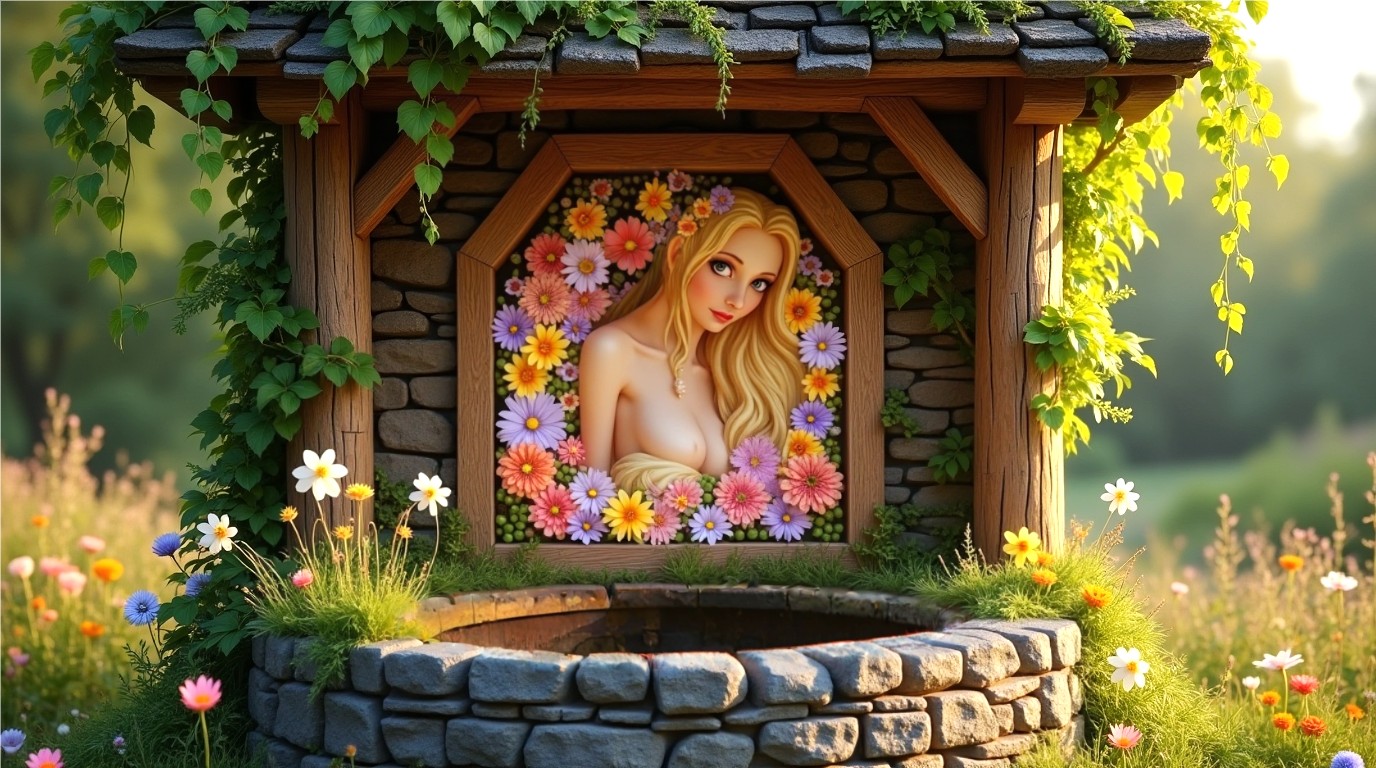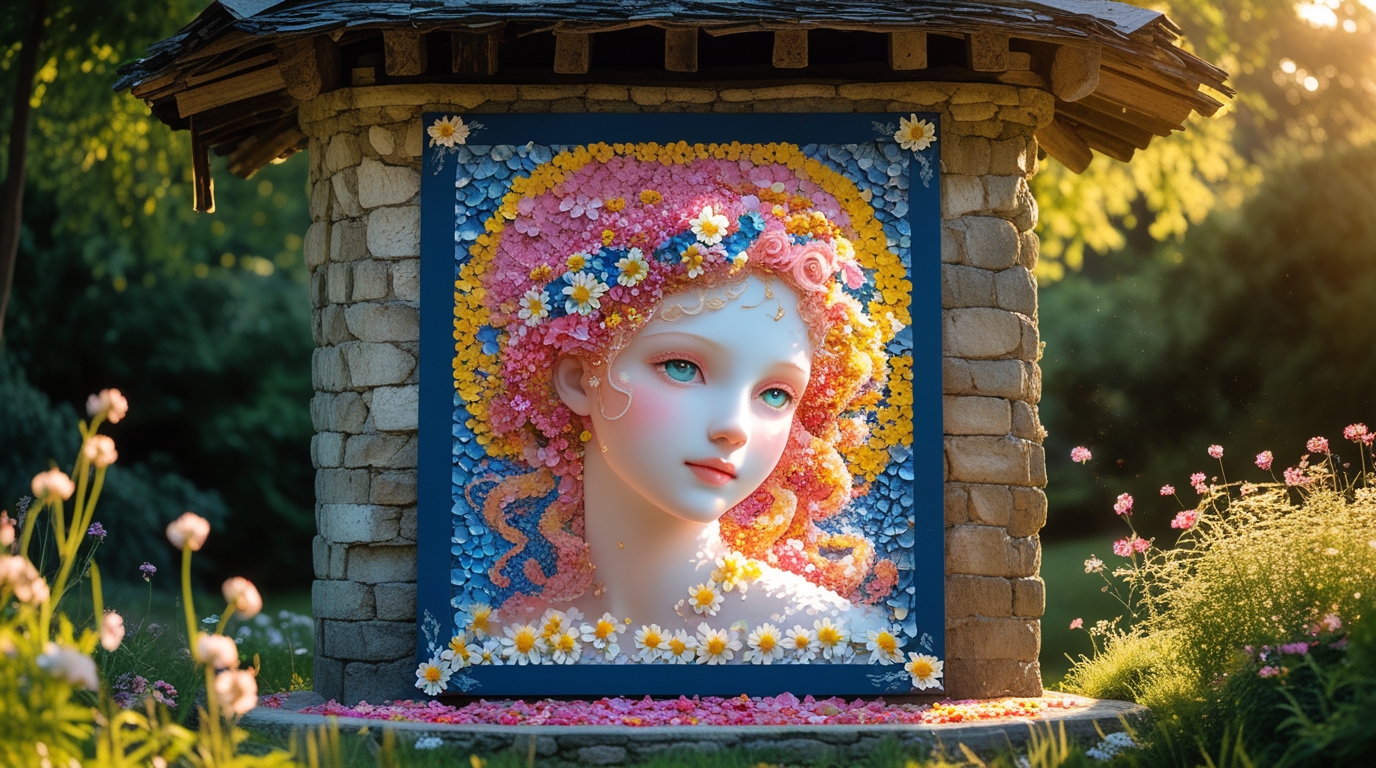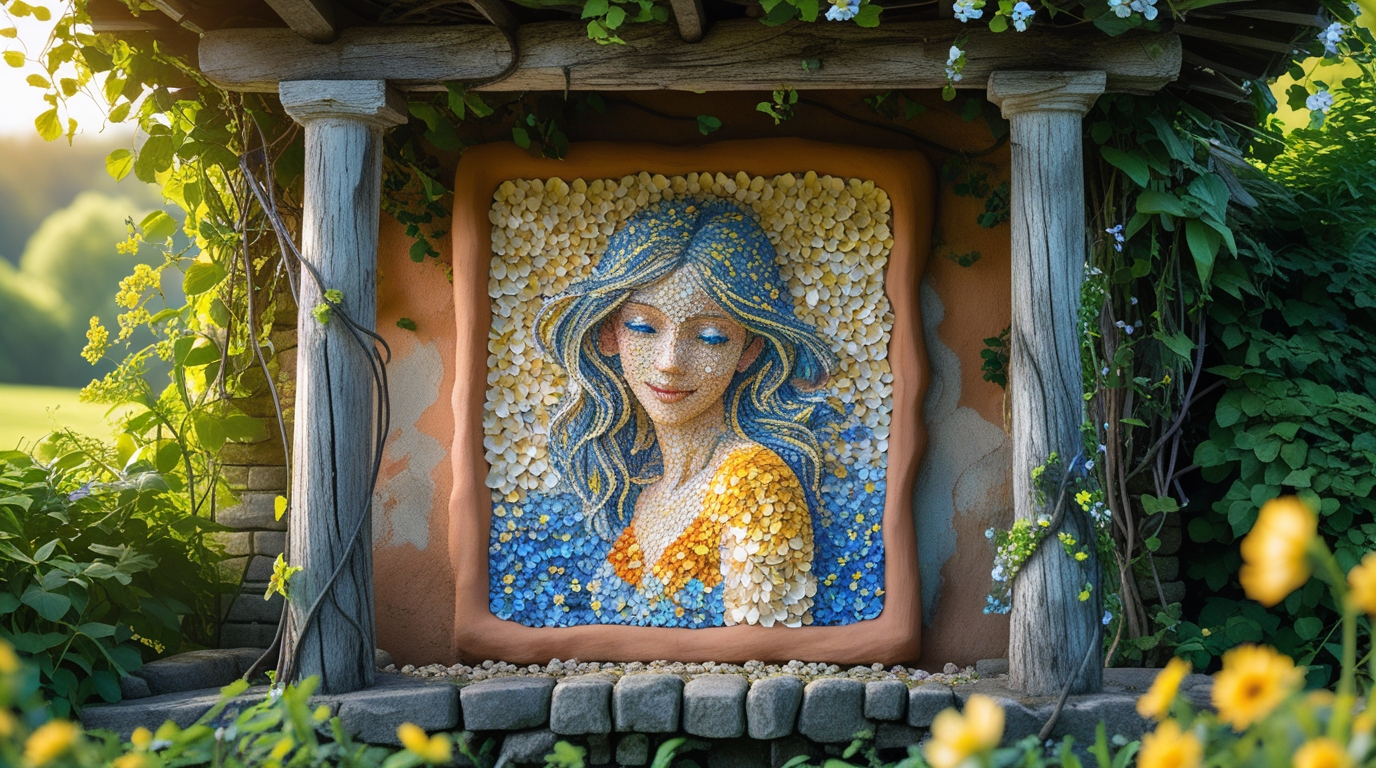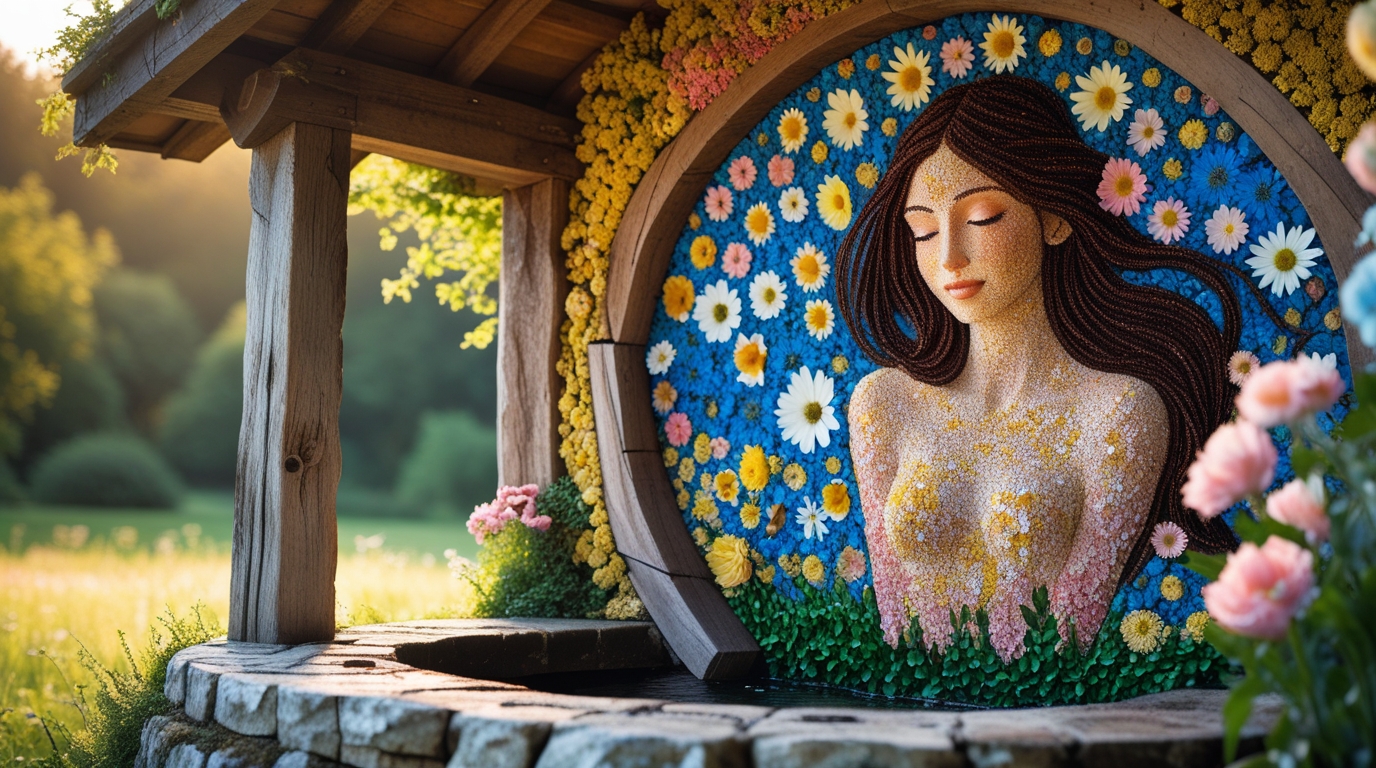High Summer Well Dressings
In the West Leaf March in the realm of Earth Rustic there is a popular custom known as the High Summer Well Dressings.
It begins on the first day after midsummer. In each of the villages and towns blessed with a traditional well, the locals seek to honour the spirit of the presiding nymph of the water by decorating the well in her honour.
Components and tools
The Well Dressings are made with a variety of materials and each community calls on all its most skilled artists and helpers to make the most beautiful decorative dressing they can achieve within a week. It is customary to begin with a painted board base that will usually have been prepared in advance. The surface is then traditionally modelled with the addition of a clay layer or layers and hundreds or even thousands of flower petals are used to construct a carefully planned mosaic which interacts with the flat painted elements.
Participants
The people who draw water from a specific well for their agricultural and domestic use, form a community who take pride in the celebration of its virtues, and the Summer Well Dressings provide them all with an opportunity to show this and also to compete with their neighbours, since there is considerable cachet to be had in creating the best dressed well.
Whilst the more artistically gifted take the lead role in the design and execution of key elements, everyone has some part to play, with children being tasked with the collection of petals and the unskilled given simple supervised roles in the repetitive tasks of sticking petals to clay.
Observance
The Summer Well Dressing always takes place in the week following the Midsummer Fair and should be complete by the end of the week in time for the judging. Wells are famously judged by the Summer Queen, who visits each one. She conducts a small ritual of thanks, which consists of drinking from the well and then taking a pitcher to a favoured plant, which symbolises the importance of the well in irrigating local crops. The winner is announced at the end of the second week after midsummer.
Primary Related Location





Cultural customs like seasonal holidays are a great ritual. For players they offer a wonderful little hook to integrate their character into the world.